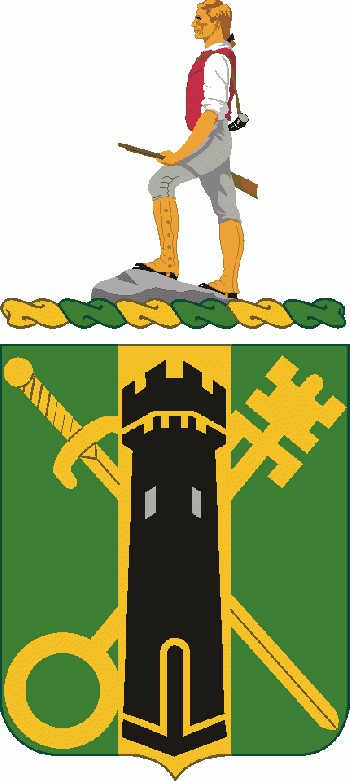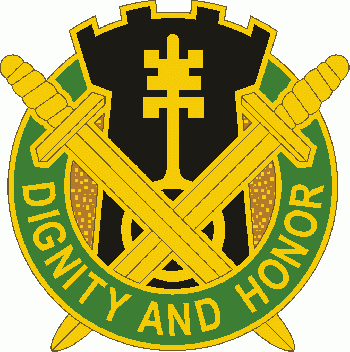391st Military Police Battalion, US Army: Difference between revisions
Knorrepoes (talk | contribs) m (Text replacement - "↵↵↵Literature" to " Literature") |
Knorrepoes (talk | contribs) m (Text replacement - "Category: " to "Category:") |
||
| Line 25: | Line 25: | ||
[[Literature]]: The Institute of Heraldry, US Army. | [[Literature]]: The Institute of Heraldry, US Army. | ||
[[Category:Military heraldry of the United States]] | [[Category:Military heraldry of the United States]] | ||
[[Category: Army heraldry]] | [[Category:Army heraldry]] | ||
[[Category:Granted 1991]] | [[Category:Granted 1991]] | ||
[[Category:Granted 1996]] | [[Category:Granted 1996]] | ||
Revision as of 09:14, 15 October 2023
391ST MILITARY POLICE BATTALION, US ARMY
| (Coat of Arms) |
(Distinctive Unit Insignia) |
Official blazon
Shield: Vert, a sword bendwise point to base in saltire with a double-warded key wards up Or, debruised by a pale of the like charged with a tower Sable, garnished of the second windows Argent (Silver Grey)
Crest: The for the regiments and separate battalions of the Army Reserve: From a wreath Or and Vert, the Lexington Minute Man Proper. The Statue of the Minute Man, Captain John Parker (H.H. Kitson, sculptor)
stands on the common in Lexington, Massachusetts.
Motto: Dignity and honor
Distinctive Unit Insignia, Description: A gold color metal and enamel device 1 1/8< inches (2.86 cm) in height consisting of a black tower bearing a gold double-warded key, wards upwards, surmounted by two diagonally crossed gold swords points down and all interlaced with a green annulet inscribed "DIGNITY AND HONOR" in base in gold letters.
Origin/meaning
Green and yellow are colors traditionally associated with the Military Police Corps. The tower is representative of the unit's World War II service in Europe and suggests physical security. Security is also denoted by the key and further emphasizes the unit's mission to provide administration and support for the operation of an internment facility. The sword is shown saltirewise and with point down to represent the nonbelligerent security mission. Black denotes strength of purpose.
The arms were approved on 19 November 1996. It was amended to correct the blazon of the shield on 7 December 2001. The Distinctive Unit Insignia was approved on 3 June 1991. It was amended to revise the description on 14 June 1991. Literature: The Institute of Heraldry, US Army.

